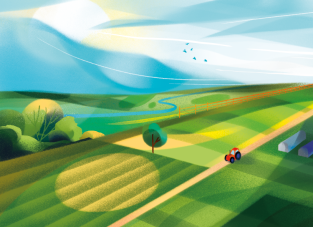Buffer Zones
Local Project
Buffer zones are areas that physically separate industrial and agricultural zones from communities or precious ecosystems. They are often either green spaces (such as parks and trees) or wet spaces (such as lakes and streams).
Buffer zones often absorb greenhouse gas emissions, helping tackle the climate emergency. They protect communities from industrial processes that have harmful byproducts, although most byproducts should not be allowed to contaminate land and ecosystems at all. Buffer zones increase local water security by preventing harmful byproducts of industrial and agricultural activities from tainting water sources. They also improve air quality by keeping pesticides, dust, and other emissions away from people and ecosystems.
Buffer zones can be managed by local authorities and councils, who should know which areas are at risk and have connections with different local groups and landowners. They may need support from government agencies responsible for agriculture, green spaces and environmental quality. Working with local groups to ensure that buffer zones are designed with their local knowledge and priorities in mind is essential.
Industry groups and companies affected by buffer zones may protest having to pay to manage and maintain buffer zones. Buffer zones are also no replacement for ending harmful pollution and dangerous industrial processes in the first place. Buffer zones may be easier to set up on public land and in areas where local planning or development control regulations enable politicians to require buffer zones to be created.
When you take this action, remove 1 Dirty Energy token from your player board.
You may take this action once per Regulation tag in this card's stack each round.

Sensitivity of Riparian Buffer Designs to Climate Change (US National Library of Medicine)
3D buffer strips: Designed to deliver more for the environment (UK Environment Agency)
Protected areas act as buffer against detrimental effects of climate change (Global Change Biology)
Attend public hearings and file comments in public proceedings advocating for strong industrial waste and pollution regulations, and buffer zone requirements as a last resort where harmful industrial byproducts can’t be avoided
Work with your local community to design good buffer zones that will be practical for local people, around industrial sites.
Report harmful industrial activities to environmental regulators and local authorities.



